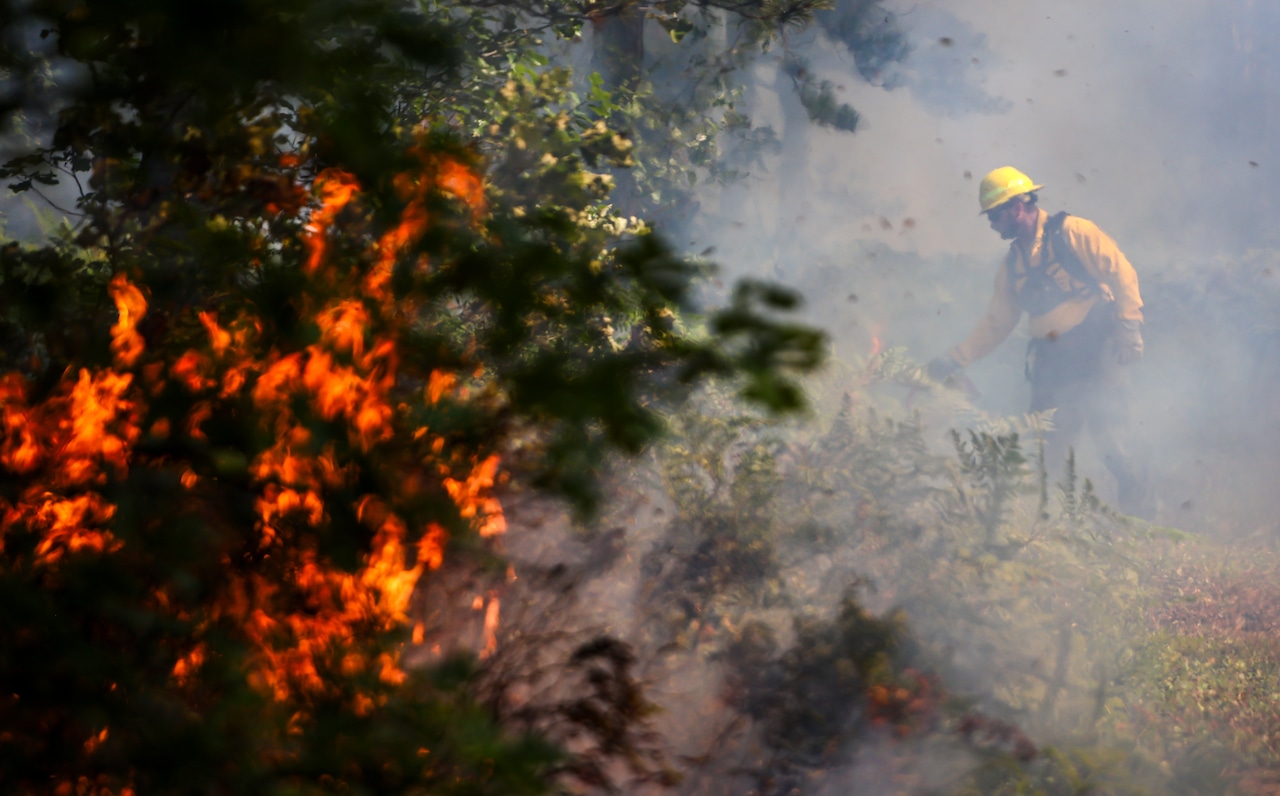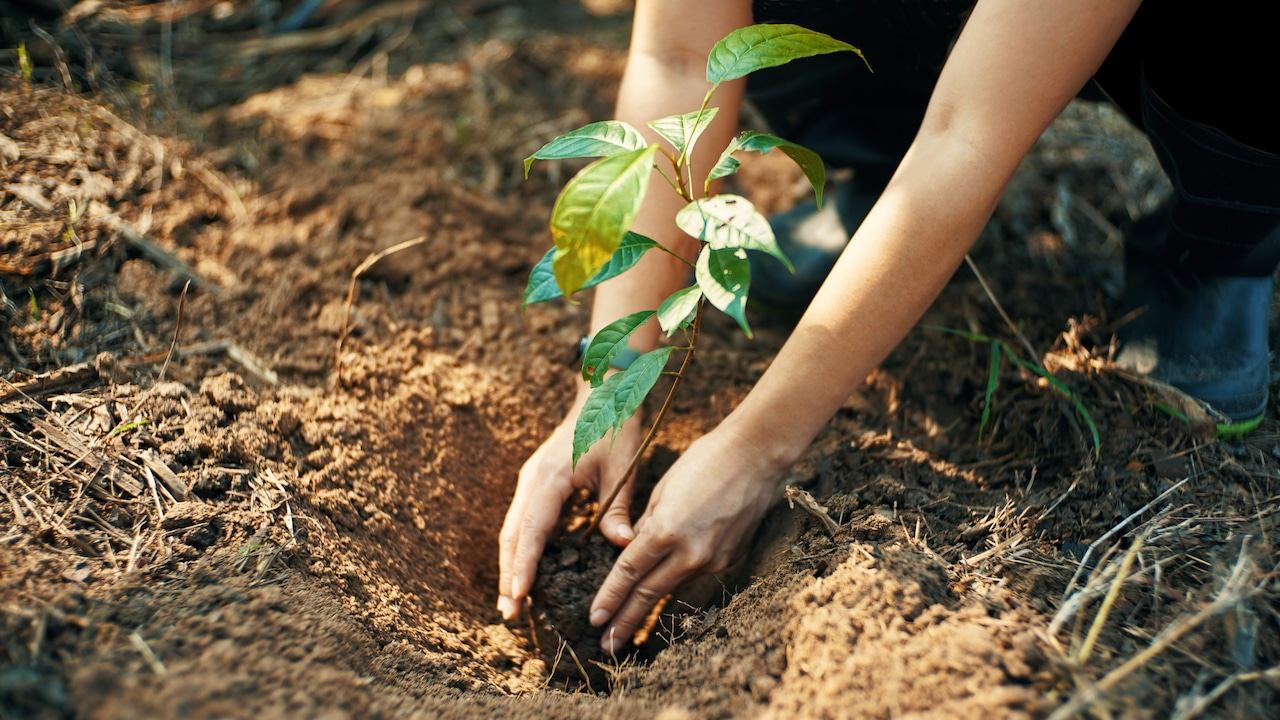The county 911 dispatch and local fire chiefs were notified, safety zones were chosen, fallback plans and contingencies were developed, and the weather forecast was reviewed and re-examined.
A group of over two dozen men and women were prepared to burn the woods on Tuesday morning.
In reality, it wasn’t woods, and that was the intention. This was a controlled burn, often known as a prescribed fire, on the distinctive Mesosic Till Barrens.
Native Americans preserved what are now the Long Pond Barrens, which are owned and actively managed by The Nature Conservancy, by burning off the ground cover and searing the pitch pines and scrub oaks.
According to Pat McElhenny, the nonprofit’s director of stewardship and fire manager in Pennsylvania and Delaware, these are barrens that were fueled by fire hundreds and hundreds of years ago by the original people. Because of the fire, that is the only reason they are here.
This is located in the Long Pond neighborhood in Tunkhannock Township, Monroe County, along Route 115, immediately south of Pocono Raceway. Parking for the Delaware State Forest Dixon R. Miller Recreation Area, located in Pennsylvania’s Pocono Mountains, is located directly across the two-lane blacktop.
A natural gas pipeline that runs east along 115 to marshes along Tunkhannock Creek runs parallel to the barrens.
Burning 18 acres
The fire crew members from The Nature Conservancy joined colleagues from the Pennsylvania Department of Conservation and Natural Resources Bureau of State Parks and Bureau of Forestry and the Pennsylvania Game Commission, dressed in green to olive drab ripstop fabric or yellow flame-resistant shirts tucked into pants of the same material.
On 18 acres of the barrens, which are a portion of the 400-acre Long Pond Preserve owned by The Nature Conservancy, the objective was to burn off almost 80% of the flora. Just in June, a birdwatching trail through the deserts opened.
According to the conservancy’s website, nature.org, local development and fifty years of fire suppression on this property have drastically changed the landscape: Rare plants and animals that rely on this environment are under danger because more than 70% of the original mesic till barrens have been converted to fire-intolerant forests.
According to Emily Tramontano, the manager of Long Pond Preserve, structural diversity is typically the component that is lacking when discussing biodiversity and habitat variety.
The area around Long Pond Barrens are hardwood forests with a high tree canopy that support both vegetation and wildlife. However, maintaining the barrens low with ferns and rhodora interspersed among the scrub oaks and pitch pines provides habitat for moths and butterflies, whose caterpillars are a significant source of food for migratory songbirds, as well as vegetation for white-tailed deer to consume.
According to Tramontano, a lepidopter study conducted on this preserve in the early 2000s found that it was home to about 12 internationally uncommon moths and butterflies. Although the data is somewhat outdated, we are utilizing it as a template to determine the purpose of the ecosystem we are administering.
White-fringed orchids were growing amid firebreaks and grassy paths mowed in among the barrens, according to a more recent count.
“I’m willing to wager that no other person in the state has 519 white-fringed orchids,” McElhenny remarked.
Smoke is a big concern
At 9 a.m., the prescribed burn team assembled for a briefing led by McElhenny, who is quick to solicit cooperation and frequently calls out for queries or concerns.
In Pennsylvania, controlled burns happen more often in the spring and are slower in the summer. This makes it an ideal moment for both the state agency partners and the nonprofit partners to learn and share their skills.
McElhenny stated that this is the true picture of our future. The Nature Conservancy is an initiative by the Bureau of State Parks, the Bureau of Forestry, and the Game Commission that aims to accomplish goals.
UTVs equipped with tools for starting and controlling the fires, such as chainsaws, leaf blowers, rakes, and rubber mats attached to long wooden handles for putting out flames, were climbed on by burn participants. In addition to first aid packs with burn supplies, there were a couple AEDs in case of a cardiac emergency.
McElhenny informed those gathered that smoke is a major worry today, pointing out that light and changeable breezes are unlikely to remove much of the smoke until the afternoon, when they are expected to kick up a little. If you’re smoking for an unusually long period of time, I’d like to be able to shuffle people through.
Dripping fire
According to McElhenny, the last prescribed fire on the 18 acres that were burned on Tuesday was in 2007. This plot has not been burned for sixty years before that.
To gain a sense of how the various fuel types might burn in the barrens, crews began with a test burn. A gallon and a half of a diesel-and-gas mixture that passes through a flame-tipped nozzle was contained in red canisters known as drip torches, which the team members tasked with starting the fire grasped.
As the canisters started to drip fire onto the thick, summer-green grass, McElhenny explained, “We start the fire on the ground and then you just sort of tip it over and it comes out.” Additionally, you have control over the flow rate. To get things rolling, they’re now conducting a lot of point-source ignition.
Gray smoke rose from the arids, and soon the crackle of fire replaced the hum of cicadas and other insects. Ash quickly rose and swirled in the heat, and in a matter of minutes, flames were licking six feet into the air.
In a few days, the exposed, scorched ground from the fire will turn green once more. As Tuesday’s burn got began, ferns and other vegetation were already thick on another parcel of the barrens that had burnt in June.
Every now and then a pine exploded brilliantly into a towering blaze, and smoke became thicker and blacker, filtering sunlight into an amber glow.
As the fire approached the pipeline breach, McElhenny remarked, “We’re doing exactly what we wanted to do.” As all of the fuel burned into charred, sooty black, crews skillfully managed the flames, a technique known as holding.
Therefore, he added, “that fire from that side will just go out when it hits our black.”
Overnight results
It can take a while for nature conservation to show noticeable results.
According to Tramontano of The Nature Conservancy, it will take years or even decades to notice any change at all. However, fire will show you a before and after success story in no time. Thus, things will begin to green out here even in the next three days.
Swarms of birds waiting to eat some crunchy grilled bugs are among the initial results, she said. Epicormic budding is a stress response to the fire that pitch pines will soon display, with green needles emerging from scarred bark to restart photosynthesis.
According to Tramontano, the pitch pine is regarded as a fire-dependent species because its wax-covered cones melt in the heat, allowing a new tree to grow.
A dozen or so Nature Conservancy supporters were present to see Tuesday’s fire, walk along a portion of the birding route led by Tramontano, and gather some wild blackberries to distribute.
More photos
Eighteen acres of Monroe County’s Long Pond Barrens are destroyed by a prescribed fire.
more lehigh valley outdoors news
-
Lycoris lilies: Why these Surprise lilies bloom in mid-August | Lehigh Valley Nature Watch
-
Want to plant a tree that will thrive in your yard? Penn State Extension event aims to help.
-
West Nile virus 2025: First human case reported in Lehigh Valley region
-
She chases monster fish in the Delaware River. Meet the Flathead Queen .
-
Rain washed out popular Slate Belt hiking trail 2 years ago. Repairs finally planned.
Your support is essential to our journalism. Please sign up for a subscription to lehighvalleylive.com now.
You can contact Kurt Bresswein at [email protected].






